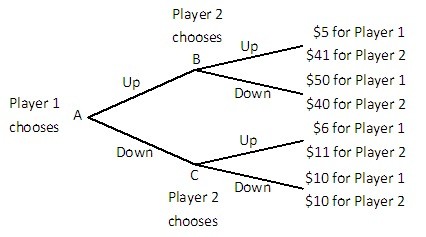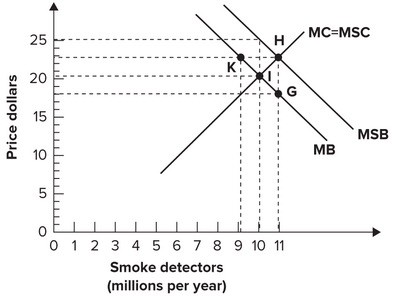Player 1 and Player 2 are playing a game in which Player 1 has the first move at A in the decision tree shown below. Once Player 1 has chosen either Up or Down, Player 2, who can see what Player 1 has chosen, must choose Up or Down at B or C. Both players know the payoffs at the end of each branch.  What is the equilibrium outcome of this game?
What is the equilibrium outcome of this game?
A. Player 1 chooses Up and Player 2 chooses Down.
B. Player 1 chooses Down and Player 2 chooses Up.
C. Player 1 and Player 2 both choose Up.
D. Player 1 and Player 2 both choose Down.
Answer: B
You might also like to view...
Because of "mental accounting:"
A. people are better able to process price changes than changes in product sizes. B. people tend to be less risk averse. C. people pay too little on their monthly credit card bills. D. people isolate purchases and sometimes make irrational decisions.
In which of the following situations should a firm increase its efforts to abate pollution?
A. The marginal benefit of abatement is less than its marginal cost. B. The marginal benefit of abatement is greater than its marginal cost. C. The marginal benefit of abatement is equal to its marginal cost. D. None of these
Hypothetical Data for Nation X in Billions of Local Currency Refer to the above table. The overall balance of payments of Nation X is
Refer to the above table. The overall balance of payments of Nation X is
A. -15 billions. B. 0. C. +15 billions. D. +30 billions.
Refer to the following graph. The point on the graph corresponding to the socially optimal output per year and the price sellers must receive to make that amount available is shown by point:
The point on the graph corresponding to the socially optimal output per year and the price sellers must receive to make that amount available is shown by point:
A. H. B. K. C. G. D. I.